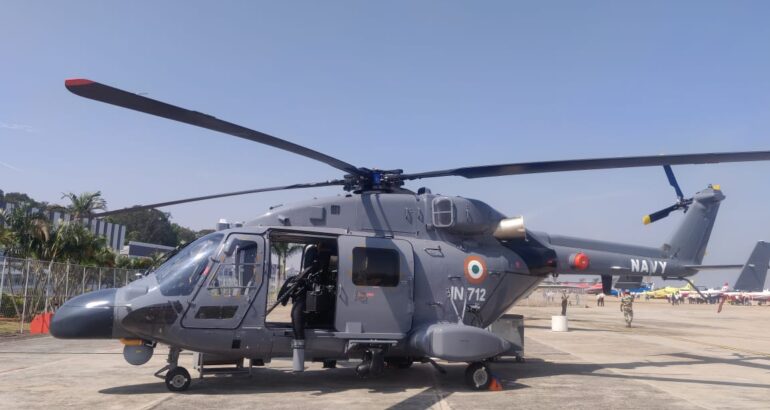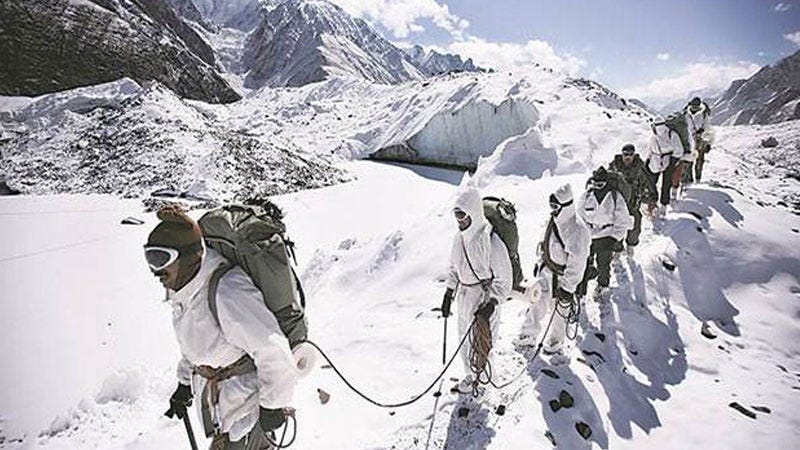Latest Thread
You are using an out of date browser. It may not display this or other websites correctly.
You should upgrade or use an alternative browser.
You should upgrade or use an alternative browser.
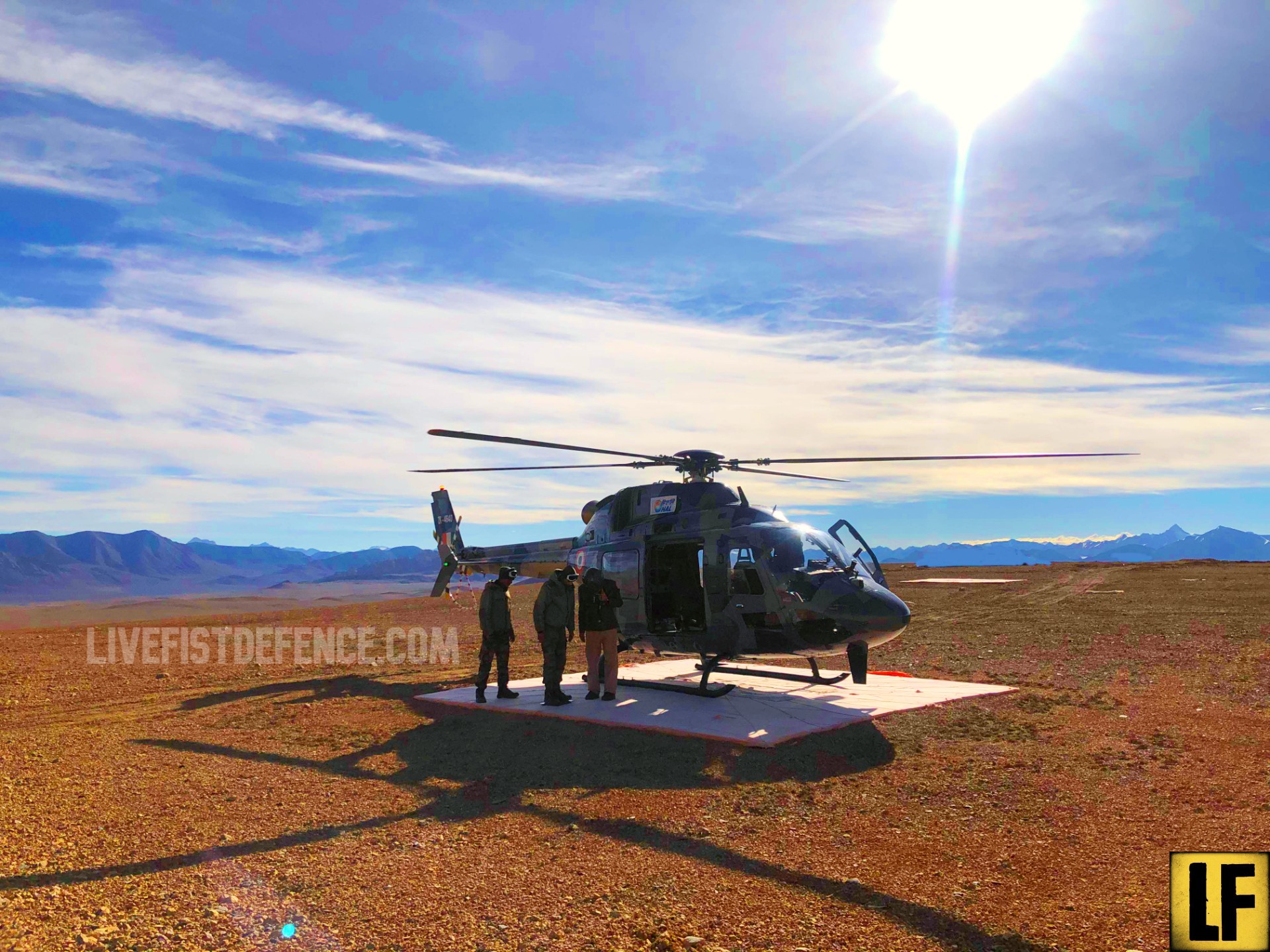
India's Light Utility Helicopter In Ladakh For Final Trials
It's the final stretch before an indigenous light helicopter will be ready to replace hundreds of legacy Cheetah and Chetak helicopters in military service. Two HAL Light Utility Helicopter (LUH) prototypes landed in Ladakh on August 19 for what is playing out as a final capability demonstration...
India’s Light Utility Helicopter In Ladakh For FINAL Trials
It’s the final stretch before an indigenous light helicopter will be ready to replace hundreds of legacy Cheetah and Chetak helicopters in military service.
Two HAL Light Utility Helicopter (LUH) prototypes landed in Ladakh on August 19 for what is playing out as a final capability demonstration for the Indian Army and Indian Air Force before orders are placed. The helicopters, in their final stretch of flight test to meet an Indian armed forces requirement of nearly 200 of these, have been flying sorties between Leh, forward airfields like Daulat Beg Oldie and even super-high altitude helipads at the Siachen glacier. The demonstration, requested by the Army, comes amidst a continuing military standoff in eastern Ladakh between the Indian and Chinese armies. You can read all about the LUH’s final stretch in our June report here.
The LUHs are back in Ladakh for the second time in less than a year. In September last year, an LUH prototype operated from the world’s highest airfield at Daulat Beg Oldie. You can read about those trial flights in our September 2019 report here. The current deployment comes at a dramatically different time from last year. Over the last week, the LUH prototypes have been flying with Indian Army and IAF pilots close to areas not far from the military standoff zones. Daulat Beg Oldie, where the LUH has operated from both last year and this week, is also the site of a major mobilisation on both sides of the Line of Actual Control.
The deployment is a crucial one for Hindustan Aeronautics Ltd (HAL), which was recently invited by the Indian Air Force to send a pair of Light Combat Helicopters (LCH) to Ladakh on an unprecedented force projection deployment in an operational setting. Livefist had detailed that deployment here with first videos breaking cover on our YouTube channel.
As we noted earlier this year, the LUH achieved initial operational clearance (IOC) in February, with FOC planned for next year, by which time paperwork on inductions will have begun. Both the IAF and Army have expressed confidence in starting procurement procedures, a sign that the LUH has established early maturity. Most work towards FOC will focus on systems and automatic flight control system (AFCS) work until the services issue their requests for quotation (RFQ) with firm requirements.
The LUH will replace legacy Cheetah and Chetak utility helicopters in the Indian Army and Indian Air Force. The latter type made a prominent popular culture blip this month with a biopic on IAF pilot Gunjan Saxena hitting screens. Saxena had flown Chetak sorties during the 1999 Kargil conflict.
India’s indigenously developed HAL Light Utility Helicopter (LUH) demonstrated high altitude capability in Hot and High weather conditions in the Himalayas recently for about 10 days.
A comprehensive test plan was executed at Leh (3300 MAMSL) in temperatures up to ISA+320C which included envelope expansion, performance and flying qualities. LUH took off from Leh and demonstrated its hot and high hover performance at Daulat Beg Oldie (DBO) Advanced Landing Ground (ALG) at 5000 MAMSL. The helicopter also demonstrated its high altitude payload capability in Siachen glacier. During the trials, pilots landed the helicopter at the highest helipads of Amar and Sonam.
“HAL has once again proved its indigenous capability in design & development. The Army version of LUH is now ready for Initial Operational Clearance”, says R. Madhavan, Chairman and Managing Director of Hindustan Aeronautics Limited (HAL).
According to Arup Chatterjee, Director (Engineering and R&D), HAL, “the performance of the helicopter and its systems are satisfactory fulfilling the requirements of the users. All planned tests were successfully demonstrated”.
The flights were carried out by composite trial team which included pilots from HAL, Wg Cdr (Retd) Unni Pillai, CTP (RW), Wg Cdr (Retd) Anil Bhambani, Gp Capt (Retd) Pupinder Singh and Gp Capt V Panwar along with Gp Capt R Dubey, Sq Ldr Joshi (from Indian Air Force) and Lt Col R Grewal & Lt Col Pawan (from Indian Army). Representatives from certification authority witnessed the trials.

HAL Light Utility Helicopter (LUH) during hot and high altitude trials in the Himalayas. HAL Photo.

HAL Light Utility Helicopter (LUH) during hot and high altitude trials in the Himalayas. HAL Photo.

 defpost.com
defpost.com
A comprehensive test plan was executed at Leh (3300 MAMSL) in temperatures up to ISA+320C which included envelope expansion, performance and flying qualities. LUH took off from Leh and demonstrated its hot and high hover performance at Daulat Beg Oldie (DBO) Advanced Landing Ground (ALG) at 5000 MAMSL. The helicopter also demonstrated its high altitude payload capability in Siachen glacier. During the trials, pilots landed the helicopter at the highest helipads of Amar and Sonam.
“HAL has once again proved its indigenous capability in design & development. The Army version of LUH is now ready for Initial Operational Clearance”, says R. Madhavan, Chairman and Managing Director of Hindustan Aeronautics Limited (HAL).
According to Arup Chatterjee, Director (Engineering and R&D), HAL, “the performance of the helicopter and its systems are satisfactory fulfilling the requirements of the users. All planned tests were successfully demonstrated”.
The flights were carried out by composite trial team which included pilots from HAL, Wg Cdr (Retd) Unni Pillai, CTP (RW), Wg Cdr (Retd) Anil Bhambani, Gp Capt (Retd) Pupinder Singh and Gp Capt V Panwar along with Gp Capt R Dubey, Sq Ldr Joshi (from Indian Air Force) and Lt Col R Grewal & Lt Col Pawan (from Indian Army). Representatives from certification authority witnessed the trials.

HAL Light Utility Helicopter (LUH) during hot and high altitude trials in the Himalayas. HAL Photo.

HAL Light Utility Helicopter (LUH) during hot and high altitude trials in the Himalayas. HAL Photo.

HAL Light Utility Helicopter Completes Hot and High Altitude Trials in Himalayas - DefPost
HAL Light Utility Helicopter (LUH) demonstrated high altitude capability in Hot and High weather conditions in the Himalayas.
Cobra Arbok
Member
- Messages
- 14
- Reactions
- 42

Number Eight: “Touching the Sky With Glory” or You’re Going To Go And Land At 22,000 ft on A Glacier!
I’ve always enjoyed a challenge but never did I imagine that one day I’d be invited to try my hand at flying in the Himalayas with the Indian Air Force’s elite 114 Helicopter Unit…
 luckyaviator.wordpress.com
luckyaviator.wordpress.com

29th Apr 2020
NUMBER EIGHT: “TOUCHING THE SKY WITH GLORY” OR YOU’RE GOING TO GO AND LAND AT 22,000 FT ON A GLACIER!
I’ve always enjoyed a challenge but never did I imagine that one day I’d be invited to try my hand at flying in the Himalayas with the Indian Air Force’s elite 114 Helicopter Unit, also known as the “Siachen Pioneers”. I was Officer Commanding 28(AC) Squadron in 2007 when I was notified that I plus one other pilot were to pack for a trip to India to observe their helicopter operations in the mountains of the Himalayas.
This was a new bi-lateral exchange and we were to subsequently host their pilots for a visit to us at RAF Benson to fly in our Merlin Mk3: I think we got the best part of the deal! I selected a junior pilot, Kevin ‘Kevlar’ Harris to accompany me (he subsequently went on to be decorated with the Distinguished Flying Cross for his exploits in Iraq) who proved to be an excellent choice. The reasons why are for another anecdote, sometime.
After staging briefly in New Delhi for in-briefing by the UK Defence Attaché, we took an internal airline flight to the home of 114 HU at Kushok Bakula Rimpochee Airport (ICAO designator VILH), an airport in Leh, the capital of Ladakh, India.
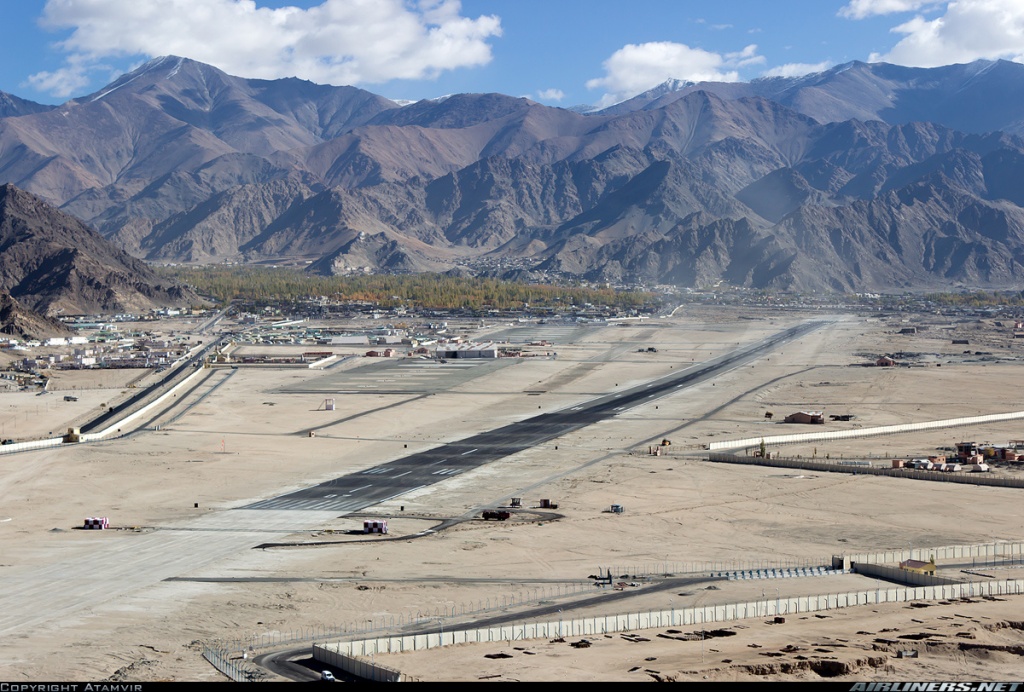
It is the 23rd highest airport in the world at 10,682 ft (3,256 m) above mean sea level. The descent through the mountains to land was incredible and I can’t even start to do justice describing it: better to take a look at a video on Youtube, such as this one:
We were greeted by our hosts and driven to the Officers’ Mess where we would acclimatise for a couple of days prior to moving by helicopter to the Forward Operating Base, at an altitude of 15,000 ft. I was frustrated but after an attempt to run up a flight of stairs had me wheezing I understood the need for the pause. I recall the first morning after our arrival waking in my room to a noise and being startled by the presence of a Non Combatant, equivalent to the British military batman, standing to attention in an immaculate white jacket holding a tray of tea and biscuits: after a greeting he said he’d go and run my bath while I enjoyed my ‘first breakfast’. I could definitely get used to this, I thought.
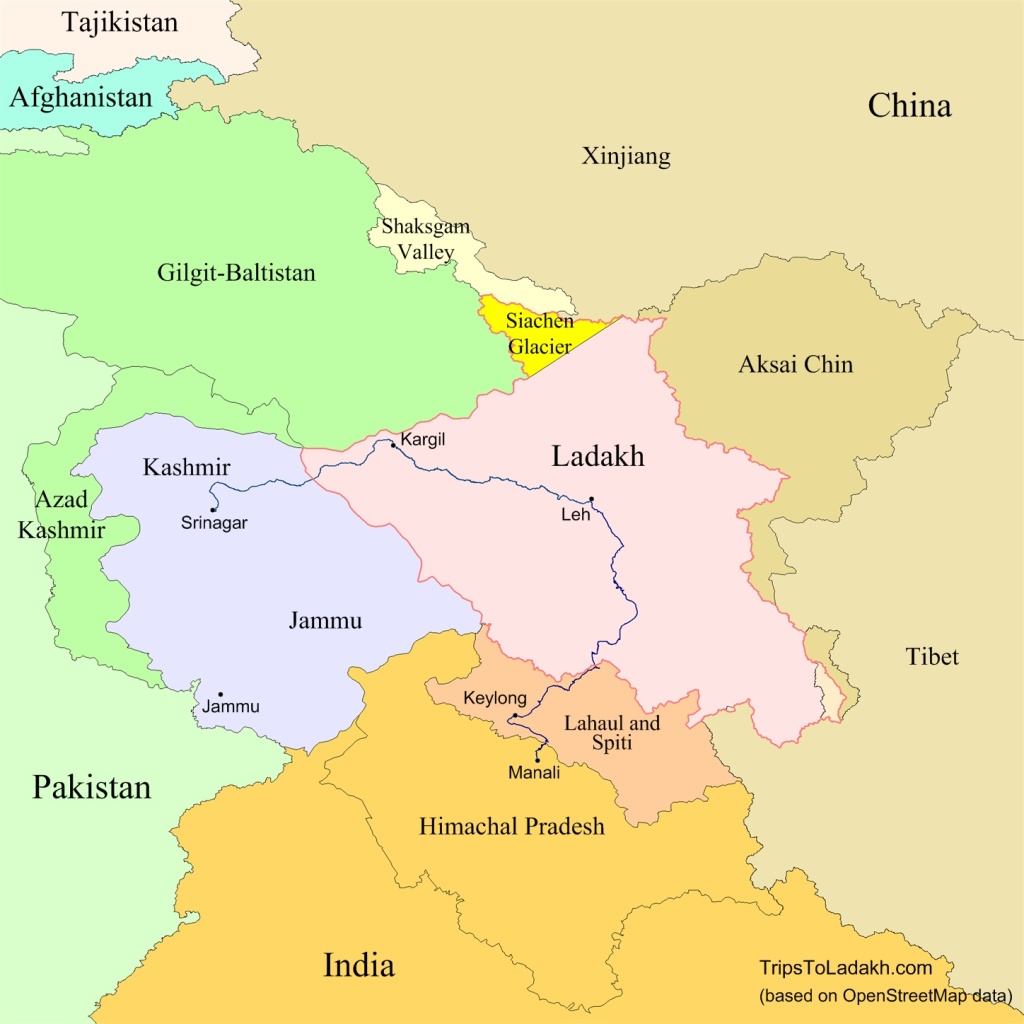
After sight-seeing and souvenir shopping in the ancient town of Leh and exploring the Indus Valley, we were finally flown to the FOB in one of 114 HU’s SA-315B, an aged copy of the Alouette II with an uprated engine for high altitude operations. Some of these aircraft were already over 30 years old but they were highly reliable, easy to maintain and the pilots trusted them. The route took us up to 17,000 ft to cross over the Karakoram Highway, a popular tourist attraction and one of the highest paved roads in the world passing through the Karakoram mountain range. We entered the Nubra Valley in Karakoram Himalaya, a highly glaciered valley with about thirty-three glaciers, the most prominent and longest amongst them being the Siachen Glacier.
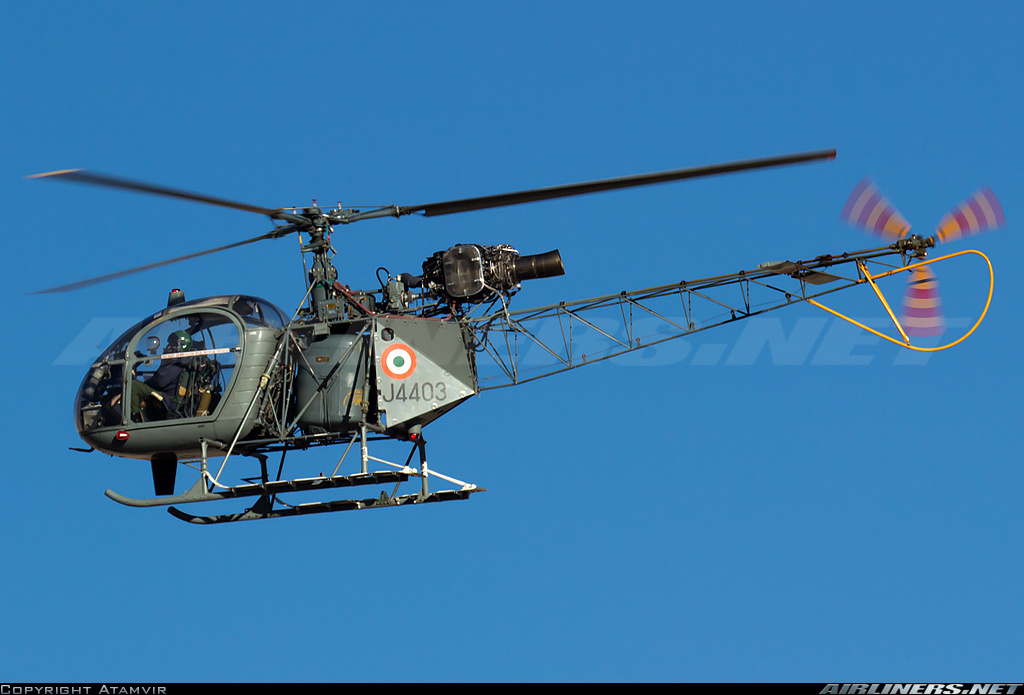
The FOB is referred to by the crews of 114 HU as having the highest ATC in the world and at 15,000 ft they might be right. And it is from here that the crews operate up into the high Himalayas in support of the Indian Army’s troops as they patrol the disputed border with its neighbour, Pakistan. Conditions are incredibly challenging, especially so in the winter months and 114 HU’s crews are rightly regarded as some of the best in the Indian Air Force. With many awards and a place in the Limca Book for World Records for the highest helicopter landing (at a density altitude of 25,140 feet), the Unit is also famous worldwide for its daring rescues of mountaineers & trekkers from across the globe year after year.
Touching the Sky with Glory!
REPORT THIS AD
REPORT THIS AD
After a series of briefs and checks we settled for the night in an attempt to get some sleep before the big day in the “proper hills”. The next day dawned clear and Kevin and I were each allocated to a pilot and aircraft for the day. After strapping in and donning oxygen masks – supplementary oxygen was essential to combat hypoxia and possibly impairment of scotopic, or low light, vision – we launched with the aircraft loaded with rations. We were heavy and the density altitude was high so we did a gentle cushion-creep departure to the north and immediately started to climb as we headed for the Siachen Glacier.
The Siachen Glacier
The views along the way were simply stunning: better words fail me. Peaks toward over us in every direction as we followed the course of the glacier. Huge crevasses scarred the surface and the ice and snow was heaped in a continual series of jagged ridges which looked small from altitude but in reality were big and presented challenging conditions for the troops to traverse. And that is what they did – they literally walked up the glacier to their posts high up the valley. This was to provide them with an opportunity to simultaneously acclimatise and develop their mountain skills. I was very happy to be making the journey in a helicopter.
Approaching 22,000ft and with an indicated airspeed that was now meaningless, my pilot pointed out our landing site ahead, further up the valley. I looked, squinted, did that daft thing where you lean forward a few inches in the hope of extending your vision by a kilometre or so, but I was damned if I could see where he was pointing. All I could see was glacier and snow with the occasional rock. He pattered his actions as he set himself up on the approach and ran through the landing checks. The wind was calm (he said, I couldn’t tell) and the visibility was good. I struggled to adjust to the scale of the surroundings so my range assessment was hopeless meaning I had no sense of how fast we were going over the surface.
I still couldn’t see the landing site as he verbally pointed out the troops waiting and the black square he was aiming at: It was as if I was suffering with extreme myopia! The pilot called “Committed” telling me that he no longer had the ability to overshoot – we had to land now and I still couldn’t see…. and with a bump we were down! I never saw it coming. My pilot had executed a flawless zero-zero landing at 22,000ft in a 30-year old single-engined helicopter on a pad I couldn’t see until we’d hit it. That’s good skills, right there.
REPORT THIS AD
But the real shock and awe was yet to come. “The soldiers are climbing up now” my pilot said. Climbing up what? I thought. And then I saw hands appear to my left, close in and then a very tanned face with big snow goggles. And then on the right-hand side too. The soldiers hauled themselves up and reached for the back doors, opened them and started to pull out the rations and throw them over the edge! I looked closely: we had landed on a pillar of ice only inches wider than the width of our landing gear. The margin for error was so tiny my incredulity momentarily caused my brain to stop functioning. When I recovered from my shock over the landing site and awe at the pilot’s skill, I got him to explain why the site was elevated – it’s to do with the tarpaulin cover and differential heating, apparently – and what would have happened if we’d missed. He pointed to a black rock some indeterminate (to me) distance away and said “You crash” – it was not rock, it was helicopter wreck. Enough said.
Ice Pillars for a Landing Site at 22,000ft
With the rations offloaded, the soldiers closed the doors, gave thumbs-up and disappeared over the edge from whence they came. We lifted, cautiously edged into forward flight and, with flying speed, turned to follow the descending glacier back to the FOB. The return flight was equally spectacular although the landing back at the FOB at 15,000ft now seemed relatively tame.
I knew I had been witness to extraordinary flying skills. How they did what I’d seen in the region’s frequent poor weather was a mystery to me. I was – and still am – filled with admiration for the pilots who fly these missions and for their ground crews who do an incredible job keeping the old SA-315s flying all year round. The Siachen Pioneers have earned more than sixty-two Gallantry and Presidential awards in over thirty years of service on Operation Meghdoot: they truly live up to their proud motto: “We do the difficult as a routine, the impossible may take a bit longer.”
Cobra Arbok
Member
- Messages
- 14
- Reactions
- 42
Photographic journey of the LUH from early prototype to a production ready machine. 3 prototypes were made for trials. All photos shown here are of the helo taking off from HAL's airport and flying over the city of Bangalore :








We often fail to appreciate how well this thing has served us, despite the initial problems.
Reviewbrah
Contributor
Fun fact:
Turkey bought HAL Dhruv's

 archive.indianexpress.com
archive.indianexpress.com
Turkey bought HAL Dhruv's

Latest News Today: Breaking News and Top Headlines from India, Entertainment, Business, Politics and Sports| The Indian Express
Today's news: Get latest and Breaking News on Politics, Business, Lifestyle, Entertainment and Sports along with News updates from around the world. Also, find English News, live coverage on Bollywood, Cricket, Technology, Celebrities and more on indianexpress.com


